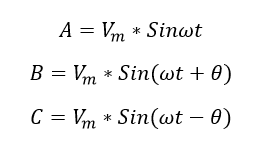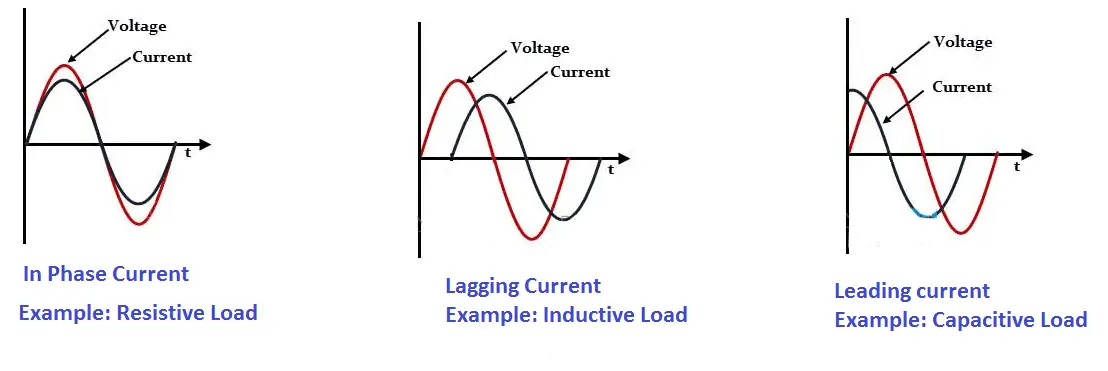Leading and Lagging Power factor:
As an electrical field engineer, I have used this word almost 10 million times. this is the important property of alternating current. the good news is DC does not have a such headache at all. In this, we are going to see what is leading and lagging. In electric power flow, it is important to know whether current is leading or lagging because it can be used to describe how much circulating reactive power flow is occurring in the system, and whether that power is inductive or capacitive. It can also play an important role in the operation of three-phase power systems as well as single phase power system.
What is leading and Lagging:
Consider Three sinusoidal wave A, B and C. All sinusoidal waveform is out phase each other and have some the phase difference of angle ‘theta’. Here the A wave reaches its Zero at point X, B wave reaches point Y and C wave reaches zero points at Z. here,
The three waves are
[wp_ad_camp_1]
To say electrically, consider reference wave as wave A, here the signal A lags the signal B by angle theta or A leads the signal C by the angle theta.
To compare the phase between two sine wave, we should follow the conditions below,
- The signal should be in sinusoidal nature.
- The two signal should have the same frequency
- Both the signal must be written in positive amplitude.
What is leading current (Leading Power factor)?
The best example of leading current is capacitive loads. For easy understanding, the waveform of the capacitor is plotted in the diagram. Here the current reaches zero before the voltage. Hence we can say that the current leads voltage by 90 deg. (angle as per diagram). This is called leading current.
The Leading current can be called as leading Power factor.
Also, the leading current can be defined as, an alternating current that reaches its maximum value up to 90 degrees ahead of the voltage that it produces. That means current leads the voltage by the angle ‘theta’.
Example: capacitive loads, In A pure capacitive load current, leads the voltage by 90
Also see: capacitor does not allow instant voltage changes.
What is lagging current (Lagging Power Factor)?
An alternating current that reaches its maximum value up to 90 degrees behind the voltage that produces it. That means current lags the voltage by the angle ‘theta’
Lagging current is called as lagging Power factor.
Example: Electric Motor, All indutive Loads.














![What is Arc Chute? Types, Working Principle [Video Included] arc chute working priciple](https://www.electrical4u.net/wp-content/uploads/2020/06/arc-chute-218x150.png)